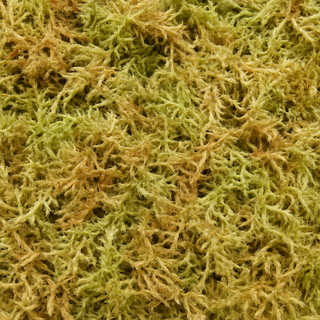If you've ordered a tissue culture plant from Quality Plants & Seedlings, you might notice something a little different — your seedling may be wrapped in soft, fluffy sphagnum moss instead of sitting in a plastic plug tray.
This isn’t just a quirk of our nursery — it’s a deliberate choice to give your plant the best start possible. But did you know that home gardeners use sphagnum moss too, for all kinds of clever purposes?
Let’s take a look at why we use it for tissue culture plants in our indoor range — and why it's also a staple in many Aussie backyards.
🌱 A Quick Note Before We Dig In...
This mossy method is part of our tissue culture program for indoor plants — think monsteras, philodendrons, and other collector-type foliage plants. These are grown in sterile lab environments and need a little extra TLC when they make the leap to life outside the lab.
It’s not the same as our veggie seedlings! That’s a whole other world — complete with peat moss blends, germination chambers, and all sorts of other “special herbs and spices” behind the scenes.
So if you’ve received a lettuce or tomato tray from us before, you’ll notice the setup is totally different. That’s intentional — we match the method to the plant.
🧪 Why We Use Moss for Tissue Culture Plants
Tissue culture seedlings are grown in tightly controlled lab conditions. They're clean, uniform, and disease-free — but also tender and a bit fussy when they first emerge.
Here’s why sphagnum moss is our go-to growing medium at this stage:
-
Gentle on roots – No compression or binding like some plug trays can cause.
-
Moisture-retentive but breathable – Keeps roots hydrated without suffocating them.
-
Naturally antimicrobial – Protects against common fungal issues in the early stages.
-
Easy to transplant – Moss peels away cleanly or can go straight into soil.
-
Plastic-free – Compostable and kinder to the environment.
🪴 Bonus: How Backyard Gardeners Reuse Sphagnum Moss
We love that our customers often reuse the moss that comes in their orders. Here are some popular, practical ways to do just that:
| Use | Common Example | Why It Works |
|---|---|---|
| Lining hanging baskets | Ferns, petunias, and trailing flowers | Moss holds moisture and soil, adds a natural look, and keeps roots cool. |
| Mounting plants | Orchids, staghorns, air plants | It mimics the mossy bark epiphytes grow on, holding moisture while allowing airflow. |
| Top-dressing potted plants | Indoor aroids, bonsai, and tropicals | Helps with humidity retention and gives a tidy, finished look. Also discourages fungus gnats! |
| Propagation | Cuttings of hoyas, begonias, philodendrons | Encourages root growth while keeping the cutting stable and moist. |
| Hydration wraps | Shipping or transporting bare-root plants | Moss protects and hydrates roots in transit — just like we do at QPS! |
🌿 Moss in Our Nursery & Yours
While we still use plug trays for tougher crops and outdoor veggies, our moss-wrapped approach is reserved for those extra-sensitive, high-value indoor foliage plants — especially when they’re fresh out of tissue culture.
If you're not sure what to do with the moss when you receive your order, or if you'd like tips on planting your tissue culture seedling into soil, just give us a shout.




